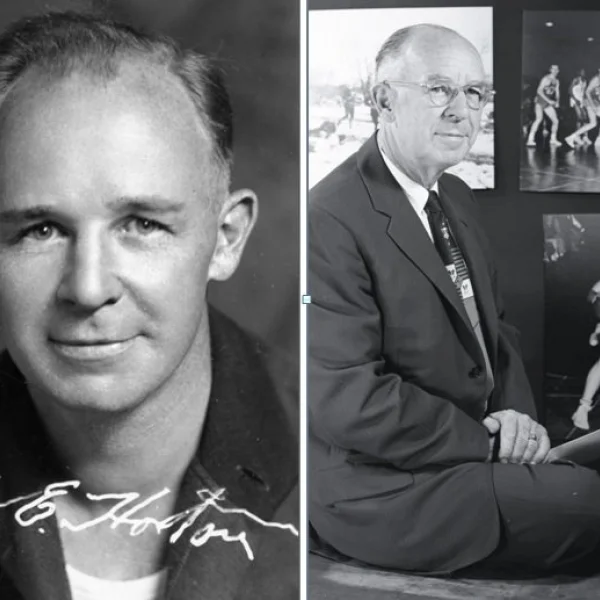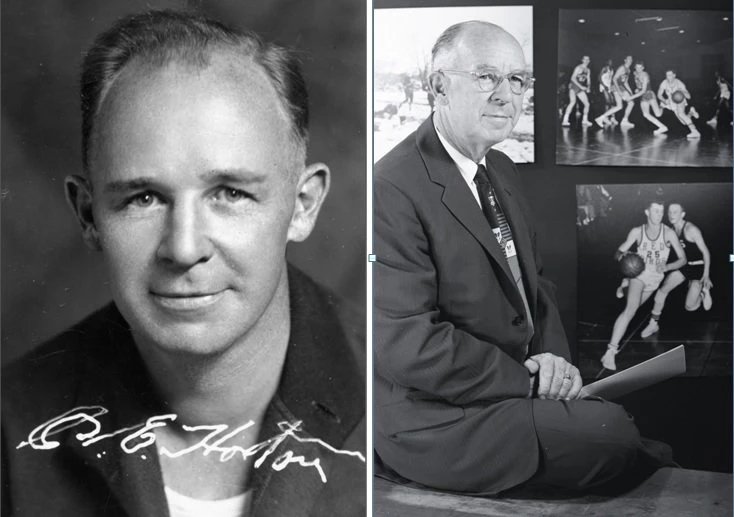Today marks the 38th anniversary of the death of Dr. Clifford E. Horton, one of the titans of Illinois State University athletics. Today, “Pop” Horton is best known as the namesake of the school’s venerable field house and as the founder of the school’s famed Gamma Phi Circus.
In fact, this year marks the 90th anniversary of Gamma Phi at ISU, one of the unique and wonderful things that make Bloomington-Normal a special place to call home.
Although Gamma Phi wrapped up its annual spring circus at Redbird Arena Saturday evening, many of its performers will be on the Normal Theater stage next Saturday, April 20, as part of a daylong, community-wide celebration to mark World Circus Day (more on those events at the end of this column.)
Born in Washington state in 1892, Clifford Horton earned a degree in physical education from the International Young Men’s Christian Association College in Springfield, Mass. (today known as Springfield College). The school was a hotbed for the study and promotion of sports and recreation. Most famously, it was there that James Naismith invented the game of basketball.
Horton embraced the “Springfield philosophy” of physical fitness as a means to improve not only one’s body, but the mind and spirit as well. In earlier jobs at YMCAs in Spokane, Wash., and Michigan City, Ind., Horton developed a love of gymnastics and tumbling, and so in Springfield he naturally gravitated toward such programs, including the annual showcase known as the “Home Show.”
While still completing college in Massachusetts he taught for a while at Ohio Wesleyan University, joining that school’s chapter of Gamma Phi, a gymnastic and athletic fraternity.
In 1923, after earning a master’s degree from Clark University in Worchester, Mass., Horton came to Illinois State Normal (as it was known then) as an athletic coach and men’s PE teacher. He would go on to serve as the head of the physical education department from 1938 until his retirement in 1961.
Six years after arriving in Normal, in late 1929, Horton organized the Normal chapter of Gamma Phi. “Our object in bringing this fraternity to life,” chapter president Forrest Steelsmith said in Nov. 1930, “was to promote the interest of physical education among the students and to honor the gymnastic excellence of the individual members of the student body and faculty.”
In many ways, Horton and Bloomington-Normal were a perfect fit, given the strong link between gymnastics, tumbling and the like with that of the vibrant world of circus entertainment.
From the 1870s into the 1950s, the community was fertile ground for circus performers, primarily trapeze artists. Beginning with Fred and Howard Green, who first performed as the “La Van Brothers,” Bloomington became a wintering ground and training center for dozens of top-flight aerial acts, including the Concellos, Fishers, LeMars, Valentines, and Wards. In fact, it’s said that a stretch of Colton Avenue was known as “Trapeze Terrace” because so many aerialists lived there in the offseason.
Not surprisingly, Horton looked to the community’s retired professionals to support his collegiate amateurs. “They were old circus people and it was in their blood,” he once said. “Everybody wants to teach you his act.”
Soon after its founding, the Gamma Phi began earning notice with its gymnastics and tumbling exhibitions in and around Bloomington-Normal. On Jan. 22, 1930, to cite a representative example, Horton and his “fraternity men” traveled to the tiny McLean County community of Cooksville to entertain the Parent Teacher Association. One month later, on Feb. 21, they were in Saybrook, another small McLean County town, to wow the locals with their showmanship flare and daring acrobatic feats, including “stunts on parallel bars.” In these early years, Horton performed alongside his students.
The following month, Gamma Phi participated in the three-day community circus held each year at the old downtown Bloomington YMCA, located at the corner of East and Washington streets.
“It was at this time that a few of the fellows started calling Horton ‘Pop,’ indicative of their affection and respect for him,” recalled Roy “Tiny” Moore, one of Gamma Phi’s charter members. Moore went on to become dean of the College of Health, Physical Education and Recreation at Mankato State University (now Minnesota State). His professional success, and that of many other Gamma Phi alumni through the year, speaks volumes to the fraternity’s role in shaping young people.
Although women were not accepted into Gamma Phi until the 1940-41 season, in its early years the fraternity often worked closely with female students in the physical education department by holding “mixed” workshops.
Gamma Phi first staged its own circus on the Normal campus in the spring of 1932, and with the exception of the war years 1942 through 1946, it’s been held annually ever since.
By the time of Gamma Phi’s 50th anniversary in 1979, performers, in addition to spring’s big “show weekend,” were appearing in 20 to 30 school assemblies, charitable shows, workshops and other exhibitions annually. And there was often a “road show” each year involving the entire troupe. In 1979, for example, they performed at Wharton Field House in Moline, Ill.
Ninety years after its founding, Gamma Phi remains a vital presence on the ISU campus and wider community.
As mentioned, next Saturday, April 20, is World Circus Day. Festivities kick off with the 9:30 a.m. rededication and blessing of the Ward family plot at Park Hill Cemetery on Bloomington’s west side. The Wards, led by the brother-sister duo Eddie and Jennie, were one of the Twin City’s more influential “flying” teams. At 1 p.m., the McLean County Museum of History hosts a program on the community’s history as the “capital of the aerial kingdom,” ending with the unveiling of the design of a trapeze statue planned for the site of the old YMCA.
World Circus Day ends that evening at the Normal Theater and Marriott Hotel and Conference Center with displays of local circus memorabilia (including objects from ISU Milner Library’s world-class Circus and Allied Arts Collection), a performance by the Gamma Phi Circus, and a showing of the 1952 silver screen classic “The Greatest Show on Earth.” For additional information, go to www.mchistory.org.
Clifford “Pop” Horton passed away on Apr. 14, 1981 at the age of 88.
It’s fitting that before show weekend each spring, Gamma Phi performers make a pilgrimage out to East Lawn Memorial Gardens Cemetery in Bloomington for a graveside visit to their patriarch, “Pop” Horton. And despite what Gamma Phi newcomers are often told by veteran performers, Horton is not buried in the handstand position!

